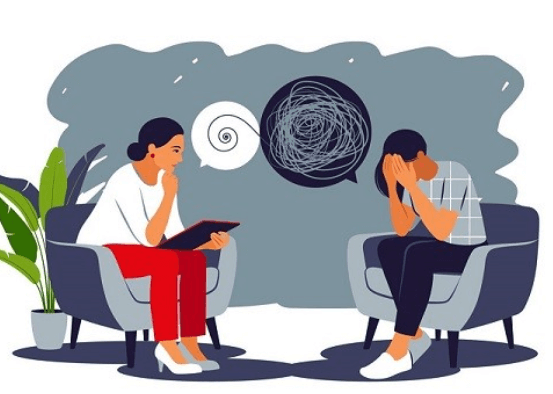Mental Health Crisis Among Youth: The Role of Social Media in Shaping Self-Esteem and Identity

In today’s hyper-connected world, social media platforms like Instagram, TikTok, and Snapchat have become a significant part of young people’s lives. They serve as spaces for self-expression, connection, and entertainment. However, these platforms also have a darker side—one that has increasingly been linked to a mental health crisis among youth. The constant barrage of curated content, unrealistic beauty standards, and the pursuit of likes and validation can profoundly impact how young people perceive themselves and shape their identities.
This article explores the role of social media in shaping self-esteem, the psychological toll it can take, and what can be done to mitigate its negative effects on youth mental health.
The Pressure of Perfection: How Social Media Affects Self-Esteem
Social media often presents a filtered and idealized version of reality. Whether it’s influencers showcasing their seemingly perfect lives or peers posting edited photos, platforms like Instagram and TikTok can create an environment where young people feel they must measure up to these unattainable standards.
- Unrealistic Beauty Standards: One of the most pervasive issues is the promotion of unrealistic beauty ideals. Filters, photo editing apps, and the constant exposure to “picture-perfect” influencers can make young people feel inadequate about their own appearance. This is especially true for teenage girls, who are often targeted with content that promotes a narrow and often unattainable version of beauty.A 2021 study published in The Journal of Adolescent Health found that increased social media use was associated with higher rates of body dissatisfaction among teens. The study highlighted that the more time young people spent comparing themselves to others online, the worse they felt about their own bodies. For some, this dissatisfaction can lead to serious mental health issues, including anxiety, depression, and disordered eating.
- The Comparison Trap: Social media encourages constant comparison. Whether it’s the number of likes, followers, or views, many young people measure their self-worth by how they stack up against others. This type of comparison can be harmful, as it often leads to feelings of inadequacy, jealousy, and self-doubt.A report by The Royal Society for Public Health in 2017 revealed that platforms like Instagram were the worst for young people’s mental health, contributing to feelings of anxiety, depression, and loneliness. The “highlight reel” nature of social media—where users only post their best moments—creates a distorted view of reality, leading young people to believe that everyone else’s lives are better or more fulfilling than their own.
- Validation Through Likes and Followers: Many young people seek validation through social media metrics—likes, comments, and followers. These numbers can become a form of social currency, with individuals feeling more valued if their posts receive more attention. However, this quest for validation can be damaging when self-worth becomes tied to how much approval one gets online.Studies have shown that the dopamine-driven feedback loop of receiving likes or positive comments creates a temporary sense of pleasure, but it can also lead to dependence on external validation. When posts don’t receive as much engagement, feelings of rejection or inadequacy can set in. This constant need for validation prevents young people from developing a strong sense of self-worth that is independent of external approval.
The Psychological Impact: Anxiety, Depression, and Identity Struggles
The effects of social media on self-esteem can have serious consequences for mental health, particularly for teens and young adults who are still developing their identities.
- Increased Anxiety and Depression: Studies have repeatedly shown a correlation between heavy social media use and higher levels of anxiety and depression among teens. According to a 2019 study from JAMA Pediatrics, teens who spent more than three hours a day on social media were more likely to report mental health issues such as anxiety, depression, and feelings of social isolation.The pressure to maintain a perfect online persona, coupled with the fear of missing out (FOMO), can exacerbate these feelings. Constant exposure to others’ seemingly perfect lives can lead to a distorted sense of reality, making young people feel like they’re falling behind or that their lives are inadequate by comparison.
- Identity Struggles: Adolescence is a critical time for identity formation. Social media can complicate this process by creating an environment where young people feel the need to conform to certain standards or trends to fit in or be accepted. This pressure can prevent teens from exploring their true interests, passions, and talents, as they may prioritize gaining approval from their online peers over discovering their authentic selves.Instead of focusing on what truly makes them unique, some teens may spend their time crafting an online persona that aligns with what they think others expect of them. Over time, this can lead to a disconnect between their online and real-world identities, making it harder to develop a sense of self that is grounded in personal values rather than external approval.
- Cyberbullying and Social Exclusion: Social media can also expose young people to cyberbullying, which can have devastating effects on mental health. Unlike traditional bullying, which happens in physical spaces, cyberbullying can follow victims everywhere, 24/7. The anonymity provided by social media platforms can embolden bullies, making it easier for them to target others without facing immediate consequences.According to a 2021 study by the Cyberbullying Research Center, about 23% of middle and high school students reported being cyberbullied in the previous month. For victims, the emotional toll can be severe, leading to feelings of humiliation, anxiety, and depression.
How Social Media Hinders Personal Development
Social media not only impacts self-esteem and mental health but can also stifle personal growth by diverting attention from activities that foster creativity, learning, and talent development.
- Distraction from Real-Life Skills: The time spent scrolling through social media can come at the expense of developing real-life skills and interests. Whether it’s playing a musical instrument, learning to code, or participating in sports, many young people may find themselves prioritizing screen time over activities that nurture their talents and personal growth.A 2022 study by Common Sense Media found that while teens spend an average of seven and a half hours per day on screens, only a small portion of that time is spent on educational or creative activities. Instead, the majority of screen time is dedicated to passive consumption, such as watching videos or scrolling through feeds.
- The Erosion of Focus and Creativity: Social media’s fast-paced, bite-sized content can reduce the ability to focus for long periods and engage in deep, creative thinking. Platforms like TikTok and Instagram train users to expect quick bursts of entertainment, which can make it harder to concentrate on more demanding tasks, such as studying, reading, or working on personal projects.A 2019 study from the International Journal of Behavioral Development found that high social media use was linked to lower academic performance among adolescents, partly due to the distraction it causes. The constant need to check notifications or engage with online content can interrupt study sessions and prevent young people from developing the focus required for academic and personal success.
Mitigating the Negative Effects: Building Healthy Social Media Habits
While social media poses challenges for youth mental health, there are strategies to mitigate its negative impact and foster healthier habits.
- Limit Screen Time: Setting boundaries around social media use is key to reducing its harmful effects. Many smartphones now offer screen time tracking features that can help individuals monitor their usage and set daily limits. By reducing time spent on social media, young people can reclaim time for real-world activities that promote personal growth.
- Follow Positive, Educational Content: Encourage young people to follow accounts that promote learning, creativity, and positive self-image. From educational YouTube channels to Instagram pages focused on mental health and self-improvement, there are many ways to use social media in a constructive way that enhances rather than detracts from personal growth.
- Practice Digital Detoxes: Taking regular breaks from social media can help restore focus and reduce feelings of anxiety or FOMO. These breaks give young people the opportunity to engage in activities that build self-esteem, such as spending time with family and friends, pursuing hobbies, or exercising.
- Develop Self-Awareness: Encourage teens to reflect on how social media makes them feel. Are they comparing themselves to others? Do they feel more anxious or insecure after spending time online? Developing this kind of self-awareness can help them recognize when their social media use is negatively impacting their mental health and take steps to address it.
Conclusion
While social media offers a world of connection and creativity, it also presents significant risks to the mental health and self-esteem of young people. Platforms that promote unrealistic standards and encourage constant comparison can distort reality and hinder personal development. By fostering healthy social media habits, promoting self-awareness, and encouraging offline activities that nurture real talents and skills, young people can protect their mental health while still enjoying the positive aspects of social media.
The challenge lies not in abandoning social media altogether, but in learning to use it in ways that enhance, rather than harm, self-esteem and identity.



